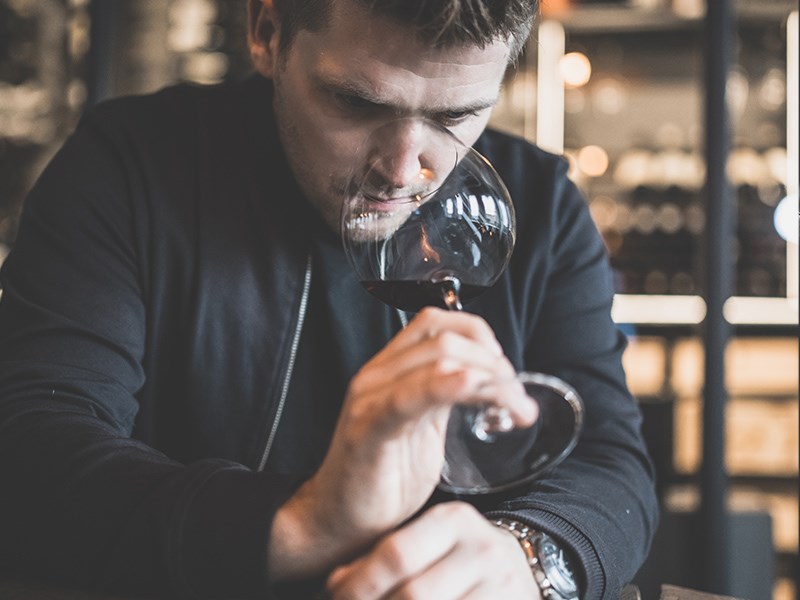Market Analysis - Other - 12. October 2023
Why Wine Investment Is Ripe for the Picking in 2023
The world of wine investment is experiencing unique circumstances in 2023. Here are 8 things you should know in the current wine market, according to RareWine CEO Mads Jensen
The world of wine investment is experiencing a unique set of circumstances in 2023, presenting a compelling opportunity for both seasoned investors and newcomers. According to Mads Jensen, CEO of RareWine Group, now is the time to consider expanding your wine portfolio rather than selling your positions. Here's why:
- Unprecedented Market Calm: This year, we've witnessed an unusually low level of trading activity in the wine market. Such periods of market calm tend to result in slightly softer prices. A static global macroeconomic environment has influenced this stagnation.
- Correction in Progress: The scale of decline in 2023 has approached the limits of what experts typically expect in a full calendar year. The Liv-ex Fine Wine 100 Index, which focuses on the world's wines, has shown a decline of 10.3 % year to date - a correction that's gaining attention. Mads Jensen sees this as an opportunity for new investors to establish positions without buying at the market's peak.
- Long-Term Growth Potential: Investment-grade wine has demonstrated consistent strength over the long term. Since 2004, Liv-Ex's Burgundy 150 index has delivered a compound annual growth rate of almost 12 %, and the Champagne 50 index is just short of an annualized return of 11 %. Given its solid fundamentals, fine wine tends to experience minor pullbacks but rarely registers losses of more than 10 % in a year.
The wine market operates primarily on the principles of supply and demand, leading to intermittent periods of stagnation lasting from a year to a year and a half. During these phases, prices may remain stable or slightly decline, only to rebound with significant momentum afterward, as we experienced after a mediocre performance in 2019. According to Mads Jensen, an investment horizon of at least five years should be expected, and 8 or 10 years is even better.
- Wine as an Investment: Approximately 0.1 % of the world's wine production is considered 'investment-grade' due to factors like quality, brand equity, limited supply, vintage appeal, trading volume, and aging potential, according to the RareWine Group CEO. Wine is an uncorrelated asset, serving as a low-volatility hedge against market disruptions in bonds or equities. It's also a physical asset that performs well against inflation.
- Restricted Supply: Investment-grade wine is limited by protective restrictions like those known from other agricultural products and geographical limitations. Factors like consumption and changes in weather patterns can further reduce supply. With a limited supply, the wine retains its core value.
- Evolving Wealth Demographics: As wealth increases globally, people seek status symbols. Fine wine and whisky have become part of this trend. Despite fluctuating demand from countries like China, a growing middle class in South Korea, Southeast Asia, Singapore, Indonesia, the Philippines, and last but not least, India fuels exceptional demand for fine wine.
- Trade Efficiency: Opting for wine investment with RareWine Invest provides a streamlined avenue for portfolio realization. RareWine Invest operates under the umbrella of the RareWine Group, a conglomerate that includes a trading company with expertise in acquiring and selling rare and fine wines. RareWine Trading ranks among the top three companies worldwide in its field. Distinguishing us from most other wine investment firms, we can secure an efficient plan for liquidating a portfolio, occasionally achieving this within a matter of days.
- Timing is vital: Timing is a critical aspect of investing in less liquid markets, as the bid/ask spread is typically much higher than we currently witness. This can sometimes make wine prices appear to be declining more than they actually are, presenting an opportunity to enter at a lower price point. This favorable spread can be particularly advantageous for investors seeking to diversify their portfolios with the stability and growth potential that fine wine offers. It underscores the importance of expert guidance, like that provided by our portfolio managers, to navigate the nuances of the wine investment landscape and make well-informed decisions – both when buying and selling.
So, if you've been considering wine investment, take notice of Mads Jensen's guidance: contemplate expanding your wine portfolio in this unique market climate. Fine wine presents an exceptional value proposition, offering stability and substantial growth potential. There's essentially no substitute product available. If you desire that specific bottle, you must be willing to meet the price – even if it sees an increase of 10 or 15%... If you opt not to purchase it, someone else surely will.
Currently, it's indeed a buyer's market, and if you have a surplus of cash, you can seize this opportunity, as Mads Jensen concludes. Professional investors have already recognized this. A lower limit exists to how low-priced a wine can become before a professional deems it too cheap and begins to acquire it.
 CEO for RareWine Group - Mads Jensen
CEO for RareWine Group - Mads Jensen
